
Wine Culture and Information since 2002 - Volume 22
 Wine Culture and Information since 2002 - Volume 22 |
|
Issue 73, April 2009 |
Contents |
|
|
Italians Make It Better |
|
Italians make it better, there is no doubt about this. Wine, of course! In a land where wine has accompanied the history and traditions of its people, this could also be normal. At least for the advantage of having a long experience from which continuously learning something, source of new suggestions and ideas. Nevertheless, despite wine had a long history in Italy, in past times the bel paese - according to an enological point of view - was not always shining and in glasses were sometimes poured wines of disputable quality. Hard to believe, twenty years ago - like many know - finding a wine in Italy worth of quality was pretty difficult: the country seemed to be submerged by an ocean of wine which could be defined in most of the cases as mediocre. There also were extraordinary exceptions, wineries and producers who were having a clear concept of quality and for which they were ready to give everything, producers and wineries who made the history of Italian wine and that still today are an extraordinary reference for everyone. The recent history of Italian wine was not written by historical quality producers only: in the past few years there have been many producers - usually young - who rode the dream of making a great wine, and many of them have also been successful in this. In order to make the miracle of Italian wine it took the acquisition of a new culture and of a new relation with wine, in particular a new commercial and enological mind. For years wine in Italy was seen, in most of the cases, as a product which was expressed by quantity only: the more, the better. This concept - having its roots in the peasant's world of the past, when surviving was a pretty serious problem and not all the times was possible to put something nourishing in the dish and in the glass - wine was considered as a food, therefore they put their attention on quantity, whereas quality simply was a marginal factor, or at least, not indispensable. Of course good wine was liked also at those times and by those people, it certainly is not a matter of rough taste, it simply was a matter of necessity. This concept was then acquired - in culture and for habit - by most of wine producers and that for years have continued to make wine in quantity, with scarce or little attention to quality. It took a new generation, new ideas and, in particular, a new approach and a new relation to wine and to the way of making a commercial product. Wine is not considered a drink-food anymore, also thanks to the well-being of “modern” times, therefore playing the role of the beverage for the elite and not an indispensable good for surviving, expression of a “culture” sometimes rich in snob behaviors, mainly promoting the concept of “just a little, but good”. Indeed, wine has always played this role, with the only fault quality culture was something destined to rich people only, that is the ones who could afford it. Whereas in the other great wine making country - France - the concept of quality has always been a fundamental and identifying presupposition of wine, in Italy this characteristic has been frequently forgotten, both for social reasons as well as for historical and political reasons. In a commercial context, which is growing more and more at international level and in the competition with the producers of other countries, the survival of profits is frequently ensured by quality, provided one can afford it. In Italy was then necessary to completely reconsider the “ideas” associated to wine making and the acquisition of new and modern wine making techniques, most of them coming from France, a model of wine quality for every country of the world. Today, after twenty years of “enological revolution”, quality of Italian wine has reached very high results, certainly capable of competing with no fear with French wine, sometimes surpassing it as well. Italians make it better, there is no doubt about this, better than past years, and the wines produced today by many wineries do not resemble at all their very same wines produced in the past. And Italians make it better than many other countries: also in this case, there is no doubt at all. As opposed to past years, the attention of producers is now strongly focused to autochthonous grapes, and the less known and lesser varieties become to emerge, also thanks to quality production criteria. And it is on autochthonous grapes Italian producers should show the world the potentials of its huge ampelographic heritage, a richness having no equals in any other country of the world. Continuing to focusing on the “same old grapes” which from France have spread everywhere in the world, means competing with a strong and massive competition, and we should not forget - and this is not by chance - the best Merlot, Cabernet Sauvignon and Chardonnay wines, as to mention the most famous international grapes, are all from France. It is however unfortunate for everyone to be happy of one's own successes without paying any attention to the future, and this is also something Italians do when they believe they are “smarter” than the rest of the world, as the rest of the world does not stay still watching us. Countries which was believed in the past to be totally incapable of making wines, or where it was believed they could make bad wines only, are now making giant leaps, they are acquiring technologies and knowledge, obtaining year after year convincing and competitive results. For many aspects, these countries are walking the same way Italy walked thirty years ago, mainly believing in international and famous varieties, however they do not have to pay the price Italy paid when they replaced autochthonous varieties with grapes which were promising miracles. Because of this choice, Italy today pays another price, by changing route - more or less - by planting again in vineyards local varieties, today revaluated by wine making technologies and by experience which allowed the understanding of the mistakes made in the past. However, this allowed to understand grape varieties are not the only thing - although fundamental - to make a quality wine. Viva Italian wine, however let's remember the others are doing the same and continue to watch us. And sometimes they are also successful in doing better than us.
|
||||
Comparing Franciacorta Extra BrutFranciacorta represents one of the best expressions of Italian bubbles, produced in different styles, it is mainly made from Chardonnay and Pinot Noir grapes |
|
The revolution of Italian bubbles produced with the classic method began in the 1960s, in the historical area of Franciacorta, in province of Brescia, and today are considered among the best ones in the world. A remarkable job - with the only goal of quality without compromises - has in fact allowed the realization of this stupendous Italian wine making area, a job done with commitment and strictness both by producers and by Consorzio di Tutela del Franciacorta (Consortium for the Safeguarding of Franciacorta). And in these years the noble bubbles of Franciacorta took many satisfactions, even in competing - and sometimes also winning the challenge - with the noble and prestigious bubbles of Champagne, considered since centuries the indisputable and great homeland of sparkling wines refermented in bottle. Franciacorta's bubbles are mainly produced with Chardonnay and Pinot Noir grapes, to which it is sometimes added Pinot Blanc. Franciacorta is produced in different styles and sweetness levels - from “non dosato”, or dosaggio zero, nature or pas dosé, to demi sec, charming and pleasing, it is also a wine suited for the pairing with desserts. Franciacorta has been the first Italian wine produced with the method of refermentation in bottle - or classic method - to be ranked as Denominazione d'Origine Controllata e Garantita (DOCG, Denomination of Controlled and Guaranteed Origin), the highest level of quality in Italy. And it should also be remembered this wine cannot be called spumante: a specific law issued by the European Commission has in fact decided this wine must be exclusively called Franciacorta, with no other mention - including the DOCG mention - just like Champagne and Cava. With the term “Franciacorta” are therefore defined all the factors determining the identification, production method, territory and, of course, the wine itself.
|
|
Our comparative tasting will focus on a specific style of Franciacorta - Extra Brut - therefore a very dry wine with a pretty low quantity of sugar. According to the definition of sweetness styles used in the production of wines, it is defined as Extra Brut a wine having a quantity of residual sugar up to 6 grams per liter, therefore obtaining a pretty dry taste, although not completely dry as in the case of non dosato style. It should be noticed sweetness in these wines is obtained by the so called liqueur d'expedition added after disgorgement in order to fill in the bottle to the original level. In Franciacorta method, liqueur d'expedition is in fact made from a blend of wines, also of past vintages, and sugar. A particularity of Franciacorta method - as opposed to other classic method wines - are the long times in bottle on lees, a period which must be of at least 18 months, 24 months for Satèn style, 30 months for vintages and 60 months for reserve wines.
The goal of our comparative tasting is to understand the quality of Franciacorta in its “almost natural” style - Extra Brut can contain up to 6 grams of sugar per liter - that is the style which most resemble dosaggio zero, in which it is not used any liqueur d'expedition, therefore a completely dry wine. The first wine selected for the tasting is Ricci Curbastro's Franciacorta Extra Brut, produced with Chardonnay and Pinot Noir in equal parts and refermented in bottle for 42 months. The second wine is Bersi Serlini's Franciacorta Extra Brut Riserva, produced with Chardonnay and a small part of Pinot Blanc, refermented in bottle for 50 months. The last wine is Ferghettina's Franciacorta Extra Brut, produced with Chardonnay and a small part of Pinot Noir, refermented in bottle for 6 years. The three wines will be served at a temperature of 12°C (53°F), in order to favor the full development of aromas - therefore scarifying the persistence of perlage - and will be poured in three ISO tasting glasses.
|
||||||||
|
One of the main characteristics in which it is paid attention during the evaluation of sparkling wines, it is the quality of the so called perlage, that is the aspect and the development of bubbles, which from the base of the glass move upwards to the surface. One of the characteristics determining quality of bubbles is the size, which in classic method wines must always be small, or better, very small, even with a diameter lesser than half a millimeter. Persistence, that is the time during which bubbles can be noticed in the glass, must be long, even though this phenomenon is determined not only by the quality of the production method, but also by temperature: the lower, the longer the persistence. The color in Franciacorta is determined by many aspects: varieties of grapes, time of contact with lees and, last but not the least, base wine fermented or aged in cask. In general terms, the color in Franciacorta can range from straw yellow to intense golden yellow. Let's start the phase of appearance analysis from Ricci Curbastro's Franciacorta Extra Brut. By holding the glass at eyes level, in vertical position and without swirling, it will be observed the development of bubbles. The perlage of this wine is made from very small bubbles and of good persistence, whereas color - observed by tilting the glass over a white surface - is characterized by brilliant golden yellow color and nuances of the same color. Also the perlage of the second wine - Bersi Serlini's Franciacorta Extra Brut Riserva - shows bubbles of small size and of good persistence, with a paler color than the previous wine, in this case intense straw yellow and nuances of the same color. The analysis of Ferghettina's Franciacorta Extra Brut reveals a perlage with very small and persistent bubbles, whereas the color shows an evident brilliant golden yellow hue with straw yellow nuances.
|
|
Thanks to the long times of refermentation and aging in bottle, Franciacorta wines - in particular reserve and vintage styles - give the nose of taster an interesting experience rich in complex aromas. The long stay in bottle in contact with lees, in fact favors a pretty rich aromatic development, a quality which is mainly favored by the autolysis of yeast, that is by their degradation, therefore enriching the wine with their aromas. The fermentation and the aging of base wine in wood containers, contributes to the enrichment of the aromatic complexity of Franciacorta, in which can also be perceived aromas of vanilla, although never exceeding to the strong and characteristic aromas of toasted wood. The general olfactory profile of Franciacorta strongly depends on the grapes with which it was produced, and it can also be found aromas of red berried fruits, given by Pinot Noir grape. The first wine we will examine in the olfactory analysis phase is Ricci Curbastro's Franciacorta Extra Brut. By holding the glass in vertical position and without swirling, we will proceed with the first smell, in order to appreciate the so called “opening aromas”, that is the aromatic qualities which mainly identify a wine. From the glass will be perceived intense, clean and pleasing aromas of pineapple, apple and pear, as well as a pleasing flowery touch of broom. After having swirled the glass - in this way it will be favored the development of the other aromatic substances and which need a higher quantity of oxygen to volatilize - we will proceed with the second smell. From the glass will be appreciated the typical aromas given by the fermentation and aging in bottle, in which can be recognized yeast and toasted wood, to which are added plum, hazelnut, honey, grapefruit and butter. Let's now pass to the second wine of our comparative tasting: Bersi Serlini's Franciacorta Extra Brut Riserva. The opening of this Franciacorta - evaluated by holding the glass in vertical position and without swirling - gives the nose intense, clean and pleasing aromas of banana, apple and plum. After having swirled the glass, we will proceed with the second smell, therefore completing the profile of the wine with aromas of yeast, bread crust, butter, pineapple, hawthorn, pear, grapefruit, hazelnut and croissant. The opening of the third wine - Ferghettina's Franciacorta Extra Brut - gives the nose intense, clean and pleasing aromas of banana, peach and hazelnut, in which it is mainly perceived, as opposed to the previous wines, the influence of Chardonnay. After having swirled the glass, we will proceed with the second smell which will complete the profile of the wine with yeast, bread crust, acacia, apple, pear, hawthorn, plum, raspberry, tangerine, praline and pink grapefruit. It should also be noticed the complexity of the three wines according to the composition of grapes and to the times of aging.
|
||||
|
In the gustatory analysis, one of the main qualities of Franciacorta Extra Brut is its basically dry taste, although not completely dry, a quality which also exalts crispness. The Extra Brut style can in fact contain a quantity of sugar up to 6 grams per liter, added after disgorgement with the liqueur d'expedition. The long aging in bottle will also give the wine an evident roundness and softness, qualities contributing both to the elegance and balance of the wine. Another important characteristic of classic method wines is effervescence, given by carbon dioxide produced during the refermentation in bottle. It should be noticed carbon dioxide has a basically acid taste and which therefore increases crispness in a wine. Moreover, carbon dioxide attenuates the perception of sweetness, therefore a wine will seem drier despite the presence of sugar. The first wine of which will evaluate taste is Ricci Curbastro's Franciacorta Extra Brut. The attack of this Franciacorta - that is the initial sensation which can be perceived in the mouth at the first sip - is characterized by a good effervescence and by a pleasing perception of crispness given by acidity, as well as pleasing roundness and softness given both by aging and by alcohol. The attack of the second wine - Bersi Serlini's Franciacorta Extra Brut Riserva - is characterized by an evident effervescence and crispness, qualities which leaves “the scene” to the pleasing sensation of roundness, which is also increased by alcohol. Also the attack of the third wine - Ferghettina's Franciacorta Extra Brut - is characterized by an evident effervescence and crispness, as well as a pleasing sensation of roundness, in this wine being more evident than the previous ones. It should also be noticed - in all the three wines - the evident dry taste, in which it is not perceived any sweetness and the small quantity of sugar contributes, in this case, to increase roundness and body of wine.
|
|
Franciacorta Extra Brut is the style to be more similar to “dosaggio zero”, that is the most natural of all Franciacortas in which corrections are not possible, a style particularly appreciated by wine lovers. The finish of Ricci Curbastro's Franciacorta Extra Brut is persistent leaving in the mouth intense and clean flavors of banana, hazelnut and grapefruit. The finish of the second wine - Bersi Serlini's Franciacorta Extra Brut Riserva - is persistent with flavors of banana, plum and apple. Also the finish of Ferghettina's Franciacorta Extra Brut is persistent, leaving in the mouth long flavors of banana, peach, tangerine and hazelnut. It should be noticed - in all the three wines - the sensation of crispness and roundness which can also be perceived after having swallowed the wine, as well as the excellent balance and the evident elegance, in which a lower sweetness - or the almost total absence of sweetness - allow a better appreciation of the natural qualities of Franciacorta.
|
Wines of the Month |
|
|
|
Score legend Prices are to be considered as indicative. Prices may vary according to the country or the shop where wines are bought |

|
|
Colli di Faenza Sangiovese Re Nero 2007 |
|
| TreRè (Emilia Romagna, Italy) | |
| Grapes: Sangiovese | |
| Price: € 18.00 | Score: |
| Colli di Faenza Sangiovese Re Nero shows an intense ruby red color and nuances of purple red, little transparency. The nose denotes intense, clean, pleasing and refined aromas which start with hints of black cherry, plum and violet followed by aromas of strawberry, blackberry, blueberry and hints of vanilla. The mouth has good correspondence to the nose, a tannic attack and however balanced by alcohol, good body, intense flavors, pleasing crispness. The finish is persistent with flavors of black cherry and plum. Colli di Faenza Sangiovese Re Nero ages for 4 months in barrique. | |
| Food Match: Stuffed pasta, Broiled meat and barbecue, Stewed meat with mushrooms | |
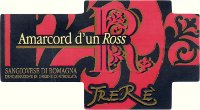
|
|
Sangiovese di Romagna Riserva Amarcord d'un Ross 2005 |
|
| TreRè (Emilia Romagna, Italy) | |
| Grapes: Sangiovese (85%), Cabernet Sauvignon (15%) | |
| Price: € 22.00 | Score: |
| Sangiovese di Romagna Riserva Amarcord d'un Ross shows an intense ruby red color and nuances of ruby red, little transparency. The nose denotes intense, clean, pleasing and refined aromas which start with hints of plum, black cherry and violet followed by aromas of blackberry, blueberry, vanilla, tobacco, chocolate, pink pepper and menthol. The mouth has good correspondence to the nose, a tannic attack and however balanced by alcohol, good body, intense flavors. The finish is persistent with flavors of plum, black cherry and blueberry. Sangiovese di Romagna Riserva Amarcord d'un Ross ages in barrique. | |
| Food Match: Roasted meat, Stewed and braised meat with mushrooms, Hard cheese | |
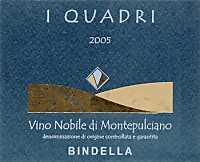
|
|
Vino Nobile di Montepulciano I Quadri 2005 |
|
| Bindella (Tuscany, Italy) | |
| Grapes: Sangiovese | |
| Price: € 17.50 | Score: |
| Vino Nobile di Montepulciano I Quadri shows a brilliant ruby red color and nuances of ruby red, moderate transparency. The nose denotes intense, clean, pleasing and refined aromas which start with hints of cherry, plum and violet followed by aromas of raspberry, vanilla, chocolate, mace, tobacco, cinnamon and leather. The mouth has good correspondence to the nose, a tannic attack and pleasing crispness, however balanced by alcohol, full body, intense flavors. The finish is persistent with flavors of cherry, plum and raspberry. Vino Nobile di Montepulciano I Quadri ages for 18 months in cask followed by 12 months of aging in bottle. | |
| Food Match: Game, Roasted meat, Braised and stewed meat, Hard cheese | |
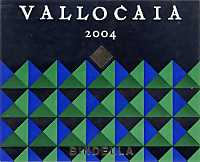
|
|
Vallocaia 2004 |
|
| Bindella (Tuscany, Italy) | |
| Grapes: Sangiovese (34%), Cabernet Sauvignon (33%), Syrah (33%) | |
| Price: € 26.00 | Score: |
| Vallocaia shows a brilliant ruby red color and nuances of ruby red, moderate transparency. The nose reveals intense, clean, pleasing, refined and elegant aromas that start with hints of black cherry, plum and black currant followed by aromas of violet, vanilla, blueberry, chocolate, tobacco, black pepper, mace and menthol. The mouth has good correspondence to the nose, a tannic attack and however balanced by alcohol, full body, intense flavors. The finish is persistent with flavors of black cherry, plum and black currant. Vallocaia ages for 18 months in cask followed by 12 months of aging in bottle. | |
| Food Match: Game, Roasted meat, Stewed and braised meat, Hard cheese | |
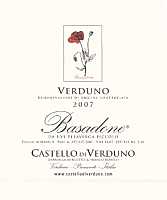
|
|
Verduno Pelaverga Basadone 2007 |
|
| Castello di Verduno (Piedmont, Italy) | |
| Grapes: Pelaverga | |
| Price: € 10.00 | Score: |
| Verduno Pelaverga Basadone shows a brilliant ruby red color and nuances of ruby red, moderate transparency. The nose denotes intense, clean and pleasing aromas that start with hints of cherry, raspberry and strawberry followed by aromas of plum, violet, cyclamen and black pepper. The mouth has good correspondence to the nose, a pleasing crisp attack and slight astringency, however balanced by alcohol, good body, intense flavors. The finish is persistent with flavors of cherry, strawberry and raspberry. Verduno Pelaverga Basadone ages for 3 months in cask, 7 months in steel tanks and for 2 months in bottle. | |
| Food Match: Pasta with mushrooms, Sauteed meat with mushrooms | |
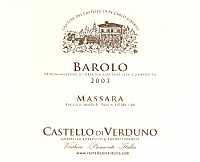
|
|
Barolo Massara 2003 |
|
| Castello di Verduno (Piedmont, Italy) | |
| Grapes: Nebbiolo | |
| Price: € 26.00 | Score: |
| Barolo Massara shows a brilliant ruby red color and nuances of garnet red, moderate transparency. The nose denotes intense, clean, pleasing and refined aromas which start with hints of cherry, plum and raspberry followed by aromas of violet, rose, vanilla, tobacco, cinnamon and cocoa. The mouth has good correspondence to the nose, a tannic attack and pleasing crispness, however balanced by alcohol, full body, intense flavors. The finish is persistent with flavors of cherry, plum and raspberry. Barolo Massara ages for 41 months in cask, 4 months in steel tanks and for at least 16 months in bottle. | |
| Food Match: Game, Roasted meat, Stewed and braised meat, Hard cheese | |
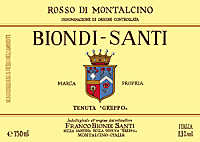
|
|
Rosso di Montalcino Etichetta Bianca 2006 |
|
| Biondi Santi (Tuscany, Italy) | |
| Grapes: Sangiovese | |
| Price: € 28.00 | Score: |
| Rosso di Montalcino Etichetta Bianca shows a brilliant ruby red color and nuances of ruby red, moderate transparency. The nose denotes intense, clean, pleasing and refined aromas which start with hints of black cherry, plum and violet followed by aromas of raspberry, rose, vanilla, tobacco and carob. The mouth has good correspondence to the nose, a tannic attack and however balanced by alcohol, good body, intense flavors, pleasing crispness. The finish is persistent with flavors of black cherry, plum and raspberry. Rosso di Montalcino Etichetta Bianca ages for 12 months in cask followed by at least 4 months of aging in bottle. | |
| Food Match: Broiled meat and barbecue, Roasted meat, Stewed and braised meat with mushrooms | |
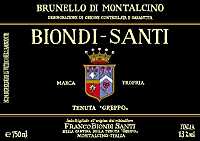
|
|
Brunello di Montalcino 2003 |
|
| Biondi Santi (Tuscany, Italy) | |
| Grapes: Sangiovese | |
| Price: € 65.00 | Score: |
| This Brunello di Montalcino shows a brilliant ruby red color and nuances of garnet red, moderate transparency. The nose reveals intense, clean, pleasing, refined and elegant aromas which start with hints of black cherry, plum and violet followed by aromas of raspberry, blueberry, vanilla, tobacco, cinnamon, chocolate, leather, tar, licorice and menthol. The mouth has excellent correspondence to the nose, a tannic attack and however balanced by alcohol, full body, intense flavors, pleasing crispness. The finish is very persistent with long flavors of black cherry, plum and blueberry. This Brunello di Montalcino ages for 36 months in cask. | |
| Food Match: Game, Roasted meat, Braised and stewed meat, Hard cheese | |
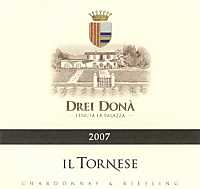
|
|
Il Tornese 2007 |
|
| Drei Donà (Emilia Romagna, Italy) | |
| Grapes: Chardonnay (85%), Riesling (15%) | |
| Price: € 11.00 | Score: |
| Il Tornese shows a pale straw yellow color and nuances of greenish yellow, very transparent. The nose denotes intense, clean, pleasing and refined aromas which start with hints of apple, grapefruit and banana followed by aromas of acacia, toasted wood, pineapple, pear, vanilla, plum and face powder. The mouth has good correspondence to the nose, a crisp attack and however balanced by alcohol, good body, intense flavors, agreeable. The finish is persistent with flavors of pineapple, plum and grapefruit. Il Tornese ages in part in cask and in part in steel tanks. | |
| Food Match: Fried fish, Pasta and risotto with fish, Stewed fish | |
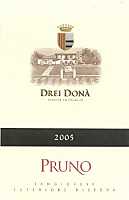
|
|
Sangiovese di Romagna Superiore Riserva Il Pruno 2005 |
|
| Drei Donà (Emilia Romagna, Italy) | |
| Grapes: Sangiovese | |
| Price: € 21.00 | Score: |
| Sangiovese di Romagna Superiore Riserva Il Pruno shows a brilliant ruby red color and nuances of ruby red, moderate transparency. The nose reveals intense, clean, pleasing, refined and elegant aromas which start with hints of black cherry, plum and violet followed by aromas of blueberry, blackberry, vanilla, tobacco, chocolate, black pepper, mace and menthol. The mouth has good correspondence to the nose, a tannic attack and however balanced by alcohol, good body, intense flavors, agreeable. The finish is persistent with flavors of plum, black cherry and blueberry. Sangiovese di Romagna Superiore Riserva Il Pruno ages in cask for 18 months followed by 10 months of aging in bottle. | |
| Food Match: Roasted meat, Stewed and braised meat, Hard cheese | |
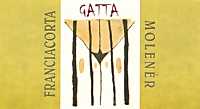
|
|
Franciacorta Extra Brut Molenèr 2000 |
|
| Gatta (Lombardy, Italy) | |
| Grapes: Chardonnay (70%), Pinot Noir (30%) | |
| Price: € 28.80 | Score: |
| Franciacorta Extra Brut Molenèr shows a brilliant straw yellow color and nuances of straw yellow, very transparent, good effervescence, fine and persistent perlage. The nose reveals intense, clean, pleasing and refined aromas which start with hints of banana, apple and raspberry followed by aromas of yeast, bread crust, hawthorn, hazelnut, praline, pear and butter. The mouth has good correspondence to the nose, an effervescent and crisp attack and however balanced by alcohol, good body, intense flavors, pleasing roundness. The finish is persistent with flavors of banana, apple and hazelnut. Part of the base wine ferments and ages in barrique. Franciacorta Extra Brut Molenèr referments in bottle for at least 60 months. | |
| Food Match: Roasted fish, Roasted white meat, Mushroom soups, Stuffed pasta | |
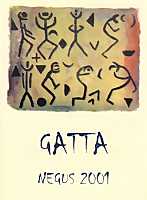
|
|
Cellatica Superiore Negus 2001 |
|
| Gatta (Lombardy, Italy) | |
| Grapes: Barbera, Marzemino, Incrocio Terzi, Schiava Gentile | |
| Price: € 25.30 | Score: |
| Cellatica Superiore Negus shows an intense ruby red color and nuances of garnet red, little transparency. The nose denotes intense, clean, pleasing and refined aromas which start with hints of cherry, plum and violet followed by aromas of blueberry, blackberry, vanilla, tobacco, chocolate, pink pepper and eucalyptus. The mouth has good correspondence to the nose, a tannic attack and however balanced by alcohol, good body, intense flavors, pleasing crispness. The finish is persistent with flavors of cherry, blueberry and plum. Cellatica Superiore Negus ages for about 24 months in barrique followed by 2 years of aging in bottle. | |
| Food Match: Roasted meat, Braised and stewed meat, Hard cheese | |
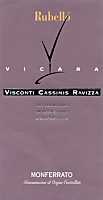
|
|
Monferrato Rosso Rubello 2003 |
|
| Vicara (Piedmont, Italy) | |
| Grapes: Barbera, Cabernet Sauvignon, Nebbiolo | |
| Price: € 12.80 | Score: |
| Monferrato Rosso Rubello shows an intense ruby red color and nuances of garnet red, little transparency. The nose denotes intense, clean, pleasing and refined aromas that start with hints of black cherry, plum and violet followed by aromas of blueberry, black currant, vanilla, cocoa, tobacco, licorice and menthol. The mouth has good correspondence to the nose, a tannic attack and however balanced by alcohol, good body, intense flavors, pleasing crispness. The finish is persistent with flavors of black cherry, plum and black currant. Monferrato Rosso Rubello ages for 20 months in cask followed by 12 months of aging in bottle. | |
| Food Match: Roasted meat, Broiled meat and barbecue, Stewed and braised meat with mushrooms, Hard cheese | |
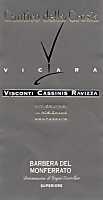
|
|
Barbera del Monferrato Superiore Cantico della Crosia 2003 |
|
| Vicara (Piedmont, Italy) | |
| Grapes: Barbera | |
| Price: € 14.00 | Score: |
| Barbera del Monferrato Superiore Cantico della Crosia shows a deep ruby red color and nuances of ruby red, little transparency. The nose reveals intense, clean, pleasing, refined and elegant aromas which start with hints of cherry, plum and violet followed by aromas of blueberry, blackberry, vanilla, cinnamon, cocoa, tobacco, mace and menthol. The mouth has good correspondence to the nose, a tannic attack and however balanced by alcohol, full body, intense flavors, agreeable. The finish is persistent with flavors of cherry, plum and blueberry. Barbera del Monferrato Superiore Cantico della Crosia ages in barrique. | |
| Food Match: Game, Braised and stewed meat, Roasted meat, Hard cheese | |
News |
|
In this section are published news and information about events concerning the world of wine and food. Whoever is interested in publishing this kind of information can send us a mail to our address.
|
AquavitaeReview of Grappa, Distillates and Brandy |
|
|
| Distillates are rated according to DiWineTaste's evaluation method. Please see score legend in the "Wines of the Month" section. |
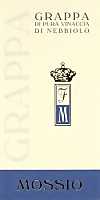
|
|
Grappa di Nebbiolo |
|
| Mossio (Piedmont, Italy) | |
| (Distiller: Distilleria Montanaro) | |
| Raw matter: Pomace of Nebbiolo | |
| Price: € 22.50 - 70cl | Score: |
| This grappa is limpid and crystalline with a pale straw yellow color. The nose reveals intense, clean, pleasing and refined aromas of plum, black cherry, vanilla, tobacco, hazelnut, licorice, chocolate and honey, with almost imperceptible alcohol pungency. In the mouth has intense flavors with perceptible alcohol pungency which tends to dissolve rapidly, good correspondence to the nose, pleasing roundness, balanced sweetness. The finish is persistent with flavors of plum, chocolate and honey. This grappa is distilled with a steam operated alembic still and ages for more than one year in cask. Alcohol 45%. | |
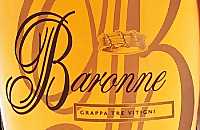
|
|
Grappa Stravecchia 20 Anni Baronne |
|
| Casa Luparia (Piedmont, Italy) | |
| Raw matter: Pomace of Barbera, Grignolino and Freisa | |
| Price: € 120.00 - 70cl | Score: |
| Grappa Stravecchia 20 Anni Baronne is limpid and crystalline, with a pale amber yellow color. The nose reveals intense, clean, pleasing and refined aromas of cherry, hazelnut, clover, vanilla, honey, chocolate, date, dried fig, licorice and mace, with almost imperceptible alcohol pungency. In the mouth has intense flavors with perceptible alcohol pungency which tends to dissolve rapidly, excellent correspondence to the nose, pleasing roundness, balanced sweetness. The finish is very persistent with long flavors of hazelnut, chocolate, dried fig and honey. A well made grappa. Grappa Stravecchia 20 Anni Baronne is produced with a discontinuous alembic still operating at low pressure and ages for 20 years in oak casks. Alcohol 42%. | |
Wine Parade |
|
|
| The best 15 wines according to DiWineTaste's readers. To express your best three wines send us an E-mail or fill in the form available at our WEB site. |
| Rank | Wine, Producer | |
|---|---|---|
| 1 |
| Aglianico del Vulture La Firma 2004, Cantine del Notaio (Italy) |
| 2 |
| Sangiovese di Romagna Superiore Riserva Thea 2005, Tre Monti (Italy) |
| 3 |
| Sforzato di Valtellina San Domenico 2002, Triacca (Italy) |
| 4 |
| Sagrantino di Montefalco Collepiano 2003, Arnaldo Caprai (Italy) |
| 5 |
| Blanc des Rosis 2006, Schiopetto (Italy) |
| 6 |
| Moscato d'Asti 2007, Vignaioli di S. Stefano (Italy) |
| 7 |
| San Leonardo 2001, Tenuta San Leonardo (Italy) |
| 8 |
| Villa Gresti 2004, Tenuta San Leonardo (Italy) |
| 9 |
| Chianti Classico Riserva Novecento 2000, Dievole (Italy) |
| 10 |
| Arkezia Muffo di San Sisto 2004, Fazi Battaglia (Italy) |
| 11 |
| Merlot 2004, Castello delle Regine (Italy) |
| 12 |
| Bradisismo 2003, Inama (Italy) |
| 13 |
| Barolo Bussia 2001, Prunotto (Italy) |
| 14 |
| Collio Bianco Col Disôre 2004, Russiz Superiore (Italy) |
| 15 |
| Wine Obsession 2001, Vignamaggio (Italy) |
| |||||||
Privacy Policy | |||||||


| Copyright © 2002-2024 Antonello Biancalana, DiWineTaste - All rights reserved |
| All rights reserved under international copyright conventions. No part of this publication and of this WEB site may be
reproduced or utilized in any form or by any means, electronic or mechanical, without permission in writing from DiWineTaste. |